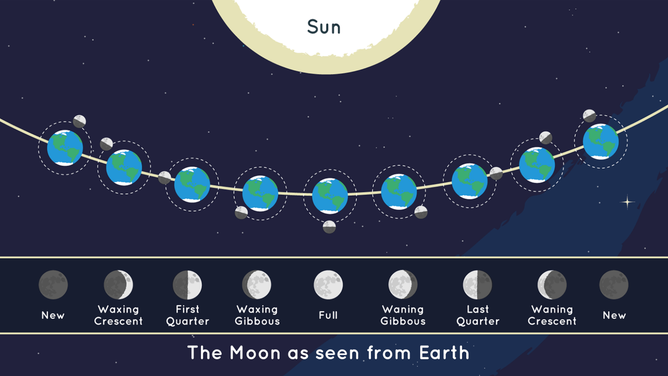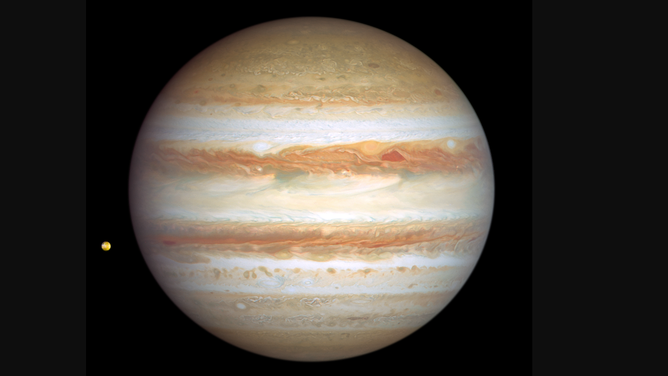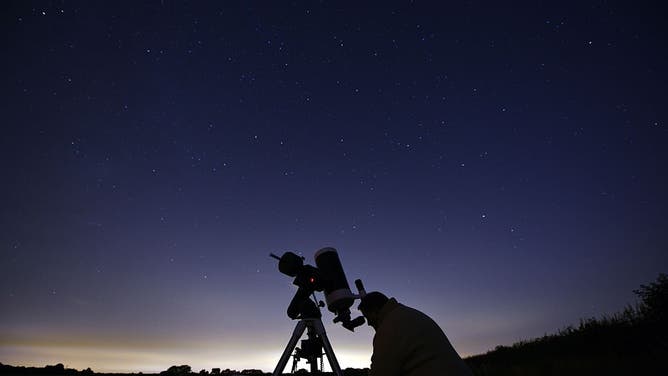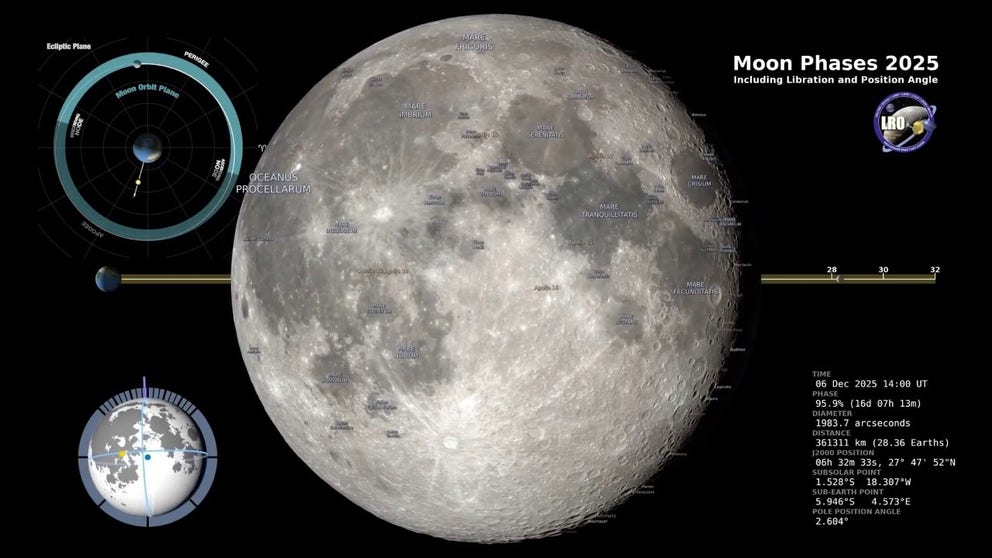Full Sturgeon Moon, Perseid meteor shower and planetary conjunction to light up August skies
Here is your August 2025 guide for celestial events. The year will feature 12 full Moons, plenty of meteor showers, four eclipses and three Supermoons.
Visualization of the Moon's phases in 2025
NASA visualization shows the Moon's phases in 2025 (NASA’s Goddard Space Flight Center)
A trio of celestial events could dazzle across the sky in August, starting with the Full Sturgeon Moon, followed by the conjunction of Jupiter and Venus, and then the peak of the annual Perseid meteor shower.
The eighth full Moon of the year, known as the Sturgeon Moon, will reach peak illumination at 3:55 a.m. EDT on Friday, Aug. 9, but will appear full and bright for several nights surrounding the peak.
The name "Sturgeon Moon" has historical ties to Native American and colonial traditions, as the large freshwater sturgeon fish were most easily caught during this time in waterways across North America.
Unlike last year, August 2025 will not feature a Blue Moon, as there are only 12 full Moons on the calendar this year.
A Blue Moon can refer either to the second full Moon in a calendar month or the third full Moon in a season that contains four events.
The next Blue Moon is expected to rise during May 2026.

The moon takes about 29.5 days to complete a full cycle.
(NASA)
DON’T MISS THESE CELESTIAL EVENTS IN 2025
Just a few days after the full Moon, early risers will be treated to the planetary conjunction of Jupiter and Venus in the predawn sky on Tuesday, Aug. 12.
The event occurs when the two planets appear very close together in the sky and will be rather bright.
According to NASA, the conjunction will be best viewed after 4 a.m. EST, but the visibility will ultimately depend on how clear the eastern horizon is.
A telescope will not be needed to view the event, but the use of a viewing device may enhance the experience.

A January 6, 2024 image of Jupiter and one of its moons, Io taken by the Hubble Space Telescope. (Image: Credits: NASA, ESA, STScI, Amy Simon (NASA-GSFC)
(NASA)
SEE THE OBJECTS HUMANS LEFT BEHIND ON THE MOON
During the overnight hours on Aug. 11–12, one of the year’s most anticipated astronomical events will peak - the Perseid meteor shower.
Originating from debris left behind by Comet Swift-Tuttle, the Perseids can produce up to 100 meteors per hour, making them one of the year’s most spectacular meteor showers.
In North America, the display can begin as early as 10 p.m. and extend into the pre-dawn hours.
According to NASA, the Perseids are known for producing numerous fireballs, which makes the event even more remarkable.

Members of the York Astronomical Society prepare to view the annual Perseids meteor shower in the village of Rufforth, near York, northern England on August 12, 2015. The Perseids meteor shower occurs every year when the Earth passes through the cloud of debris left by Comet Swift-Tuttle.
(Photo credit should read OLI SCARFF/AFP via Getty Images / Getty Images)
